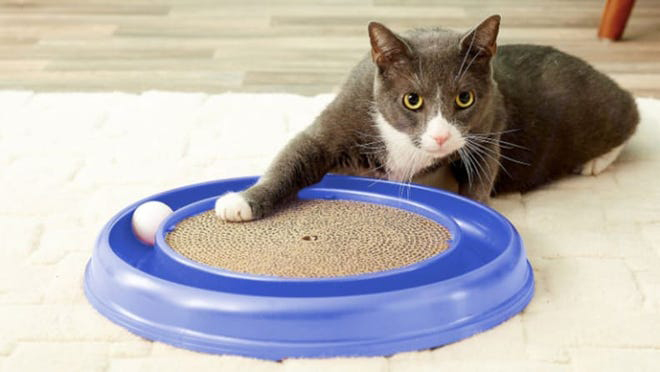I make these wall calendars every year with one big image in the background or twelve themed images in alternating squares.
I note the birthdays of friends and relatives (and cats) with their name on the date plus a bright gold star behind it.
CERN (https://home.cern/) is the European Council for Nuclear Research organization. CERN’s Large Hadron Collider (LHC), on the French/Swiss border, is the largest and most powerful particle accelerator ever built. It is not to be confused with a cat-style particle accelerator (second image). It pushes protons or ions within metal “beam pipes,” moving in a circle in clockwise and anti-clockwise directions, to near the speed of light, and then collides them at four points around the circumference. At these points, the energy of the particle collisions gets transformed into mass, spraying particles in all directions, which are analyzed there. The LHC is 27 kilometers (about 17 miles) in circumference, 100 meters (more than 300 feet) underground. This calendar shows different round features in and cross sections of the accelerator complex, except May, June and December. Round things are fun.
Individual images
- January – Cross-section of the Compact Muon Solenoid (CMS) detector, which sits at one of the four collision points. It is a general-purpose detector; that is, it is designed to observe any new physics phenomena that the LHC might reveal. Visit https://cms.cern/detector for more information.
- February – View of the CMS Tracker Outer Barrel in the cleaning room on January 19, 2007. See “The Fantastic Machine That Found the Higgs Boson” (https://www.theatlantic.com/photo/2012/07/the-fantastic-machine-that-found-the-higgs-boson/100333/) in The Atlantic from July 6, 2012.
- March – Something under construction—couldn’t find this one on the CERN site for identification, sorry.
- April – This photo appears in a number of scientific papers but isn’t identified, and I can’t find it on the CERN site.
- May – Quilt by textile artist Kate Findlay based on the LHC, called “Breakthrough” (see https://www.symmetrymagazine.org/article/february-2012/gallery-kate-findlay for more information).
- June – Particle accelerators at Fermilab in Batavia, IL (https://vms.fnal.gov/asset/detail?recid=1771795). From the Fermilab site: “Fermilab and its scientists have played a significant role in the Large Hadron Collider, particularly in the CMS experiment.”
- July – ATLAS beam pipe installation. ATLAS is one of the experiments around the circumference of the LHC.
- August – “Scientists are seen working on the inside of the ATLAS cryostat, which will be used to cool liquid argon to 90 K in the electromagnetic calorimeter. Thin lead plates immersed in the cooled liquid will produce electromagnetic showers of particles when an electron, positron or photon enter the detector. This causes the argon to glow, allowing the initial particle energy to be measured.” (http://cds.cern.ch/record/984682)
- September – I’m pretty sure this is the CMS detector again but I can’t find the image in the CERN database. Something to do with Higgs Boson research.
- October – Installation of the world’s largest silicon tracking detector in the CMS experiment (here).
- November – CMS detector, can’t find the image in the CERN database.
- December – Superconducting quadrupole magnets for directing proton beams to interact, made in Fermilab (https://commons.wikimedia.org/wiki/File:LHC_quadrupole_magnets.jpg).


